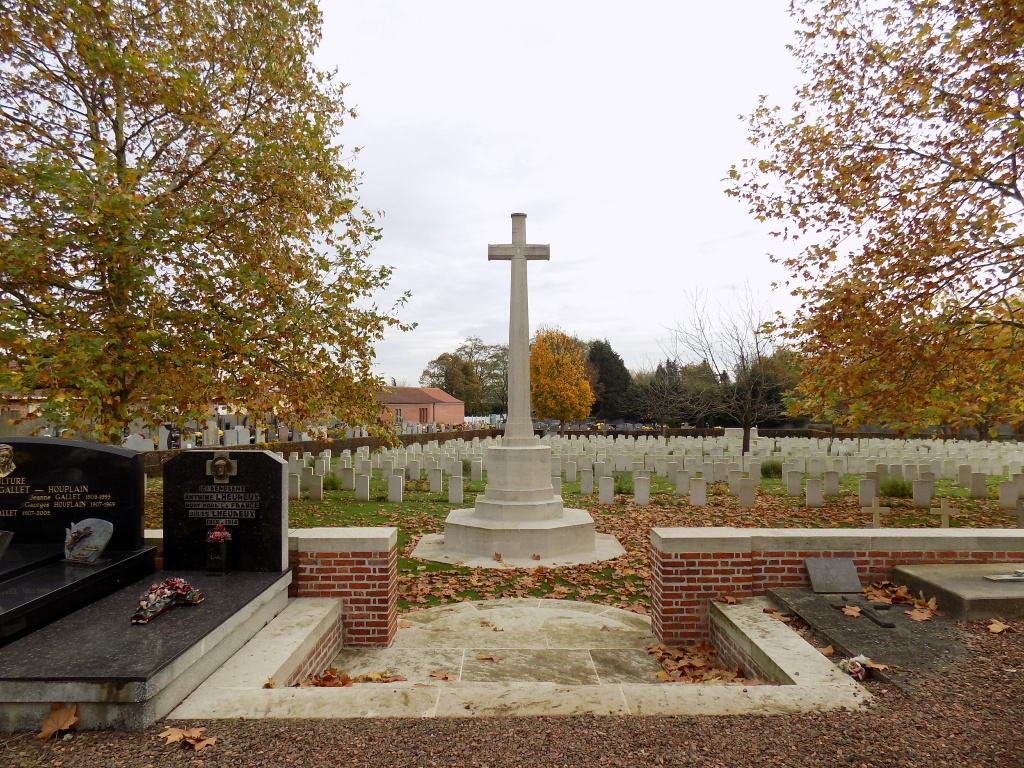William T Lockey
Date of birth: 1893
Date of death: 10.10.1915
Area: Outwood, Wakefield
Regiment: Coldstream Guards
Family information: Husband of Annie Lockey nee Angell
Rank: Private
Service number: 13179
War Service
When war was declared, on 4th August 1914, William Thomas Lockey was employed at Messrs Charlesworth Colliery at Stanley. At this time he volunteered for army service and was drafted to the Coldstream Guards. On the 8th November 1914 Guardsman Lockey married Annie Angell, of Rook’s Nest Road, at St Mary Magdalene Church, Outwood.
After completing his training in England, on the 27th April 1915, William Thomas Lockey was drafted to the 1st Battalion, Coldstream Guards, in France. He joined the battalion soon after the Battle of Aubers Ridge.
The 1st Battalion, Coldstream Guards was a regular army battalion which had been on the western front since 14th August 1914. The battalion was in Belgium on 23rd August when the German army launched its attack at Mons. They were involved in the withdrawal of the British Expeditionary Force to beyond the River Marne, before the attack was halted. On the 13th September the Allied counter-attack was launched and the Marne and Aisne re-crossed. However on 16th October 1914 the 1st Battalion, in Division, was withdrawn from the line and moved to Flanders. Here the 1st Coldstream Guards was deployed at the first Battle of Ypres, which saw the formation of the Ypres Salient. During the winter months the battalion was involved in the operations around La Bassee Canal and Givenchy.
On 25th August 1915 the 1st Coldstream Guards was transferred to the 2nd Guards Brigade, Guards Division. On the 22nd September the 1st Battalion marched from Lumbers and joined the Brigade at Delette, prior to being deployed at the Battle of Loos.
At 03.00 hrs on 27th September the 1st Coldstream Guards occupied the first and second line of former German trenches opposite Lone Tree. Later that day they were in support of an attack by the 2nd Irish Guards at the Chalk Pit. At 15.45 hrs on the 28th September the 1st Battalion joined the attack, but immediately came under enfilade fire from enemy machine guns and sustained many casualties. Though some men reached the objective, which they found unoccupied, they too came under enfilade fire and were forced to withdraw to the trenches around the Chalk Pit. When relieved on the 1st October the Battalion had incurred over 200 casualties, including the Commanding Officer and Adjutant, who were killed when a shell hit Battalion Headquarters.
Four days later the 1st Battalion returned to the trenches around the Chalk Pit. The next day, the 6th October, two men were killed and one wounded by our own shells. On the 8th October the trenches were heavily shelled, inflicting over 30 casualties, one of whom was Guardsman Lockey.
William Thomas Lockey died on 10th October 1915 and was buried in the extension to the churchyard cemetery at Cambrin. For much of the war, the village of Cambrin was only 800 metres from the front line trenches and the churchyard extension was used for front line burials until February 1917. The cemetery now contains 1,211 Commonwealth burials from the First World War. There are also 98 French war graves.
Family Life
William Thomas Lockey was born in January 1893, the eldest son of George Thomas Lockey and his wife Ada, formerly Batty. Shortly afterwards, on the 19th February, he was baptised at St John’s Church, Wakefield. At this time his parents were living at Newton, near Wakefield and his father was employed as a bricklayer. Later the family lived at Providence Road, Wakefield. At the time of the 1911 census William Thomas Lockey was living with his parents and six siblings at Oak Street, off Jacobs Well Lane and was employed as a pony driver at a nearby colliery.
 Cambrin Churchyard Extension
Cambrin Churchyard Extension

